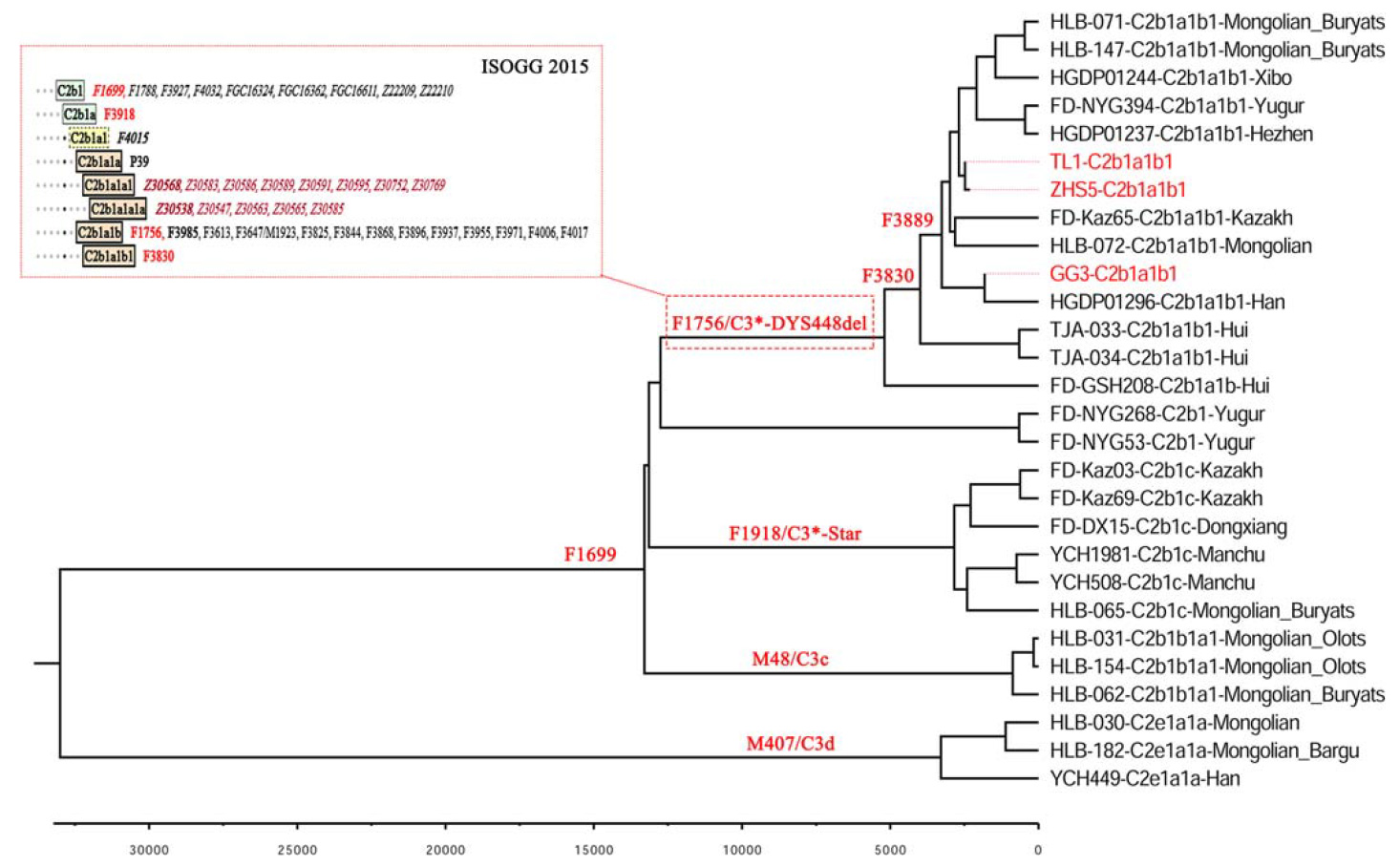The genome of an ancient Rouran individual reveals an important paternal lineage in the Donghu population, by Li et al. Am J Phys Anthropol (2018), 1–11.
Abstract (emphasis mine):
Objectives
Following the Xiongnu and Xianbei, the Rouran Khaganate (Rouran) was the third great nomadic tribe on the Mongolian Steppe. However, few human remains from this tribe are available for archaeologists and geneticists to study, as traces of the tombs of these nomadic people have rarely been found. In 2014, the IA‐M1 remains (TL1) at the Khermen Tal site from the Rouran period were found by a Sino‐Mongolian joint archaeological team in Mongolia, providing precious material for research into the genetic imprint of the Rouran.Materials and methods
The mtDNA hypervariable sequence I (HVS‐I) and Y‐chromosome SNPs were analyzed, and capture of the paternal non‐recombining region of the Y chromosome (NRY) and whole‐genome shotgun sequencing of TL1 were performed. The materials from three sites representing the three ancient nationalities (Donghu, Xianbei, and Shiwei) were selected for comparison with the TL1 individual.Results
The mitochondrial haplotype of the TL1 individual was D4b1a2a1. The Y‐chromosome haplotype was C2b1a1b/F3830 (ISOGG 2015), which was the same as that of the other two ancient male nomadic samples (ZHS5 and GG3) related to the Xianbei and Shiwei, which were also detected as F3889; this haplotype was reported to be downstream of F3830 by Wei et al. (2017).Discussion
We conclude that F3889 downstream of F3830 is an important paternal lineage of the ancient Donghu nomads. The Donghu‐Xianbei branch is expected to have made an important paternal genetic contribution to Rouran. This component of gene flow ultimately entered the gene pool of modern Mongolic‐ and Manchu‐speaking populations.

Excerpt:
These results suggested that TL1 likely presents a close paternal relationship to the Donghu people and may have even descended from a branch of the ancient Donghu-Xianbei people, based on the conclusion that haplogroup C2b1a/F3918 can be considered the paternal branch of the ancient Donghu people (Zhang et al., 2018). The Y-chromosome phylogenetic tree showed that TL1 shared a branch with modern Mongolian-Buryats, Hezhen, Xibo, Yugur, and Kazakh, suggesting that the TL1 individual from the Rouran period should also generally present close paternal genetic relationships with modern Mongolic- and Manchu-speaking peoples.
In general, the Rouran Khaganate originated from an alliance of the ancient Eurasian steppe nomads, which disintegrated and disappeared with the progress of history. This group was complex, and its origin cannot be explained based only on one individual. However, we can trace the genetic imprint of the Rouran people through genome analysis of the TL1 individual. On the basis of the comparison with other ancient nomadic people (Donghu, Xianbei, and Shiwei) and data on modern individuals from published articles (Lippold et al., 2014; Wei et al., 2017) (Supporting Information S5), we found that they all share the same haplotype implying shared paternal ancestry between the Donghu, Xianbei and Rouran populations. Furthermore, this gene flow (mainly haplogroup C2b1a/F3918) did not stop with the disappearance of the Rouran, and a portion was instead passed on in other groups, such as the ancient Shiwei people (later than Rouran), eventually reaching the gene pool of modern Mongolic- and Manchu-speaking populations (Mongolian-Buryats, Hezhen, Xibo, et al).
Interesting to see now confirmed with ancient DNA the proposal of a C3*-DYS448del cluster as the paternal lineage defining ancient Mongolian tribes, a theory based on ancient and modern samples – since it is found in low frequency in almost all Mongolic- and Turkic-speaking populations.
This is yet another proof of how prehistoric ethnolinguistic expansions are usually accompanied by haplogroup expansion and reduction in variability.
I wonder what other ancient chiefdom-type steppe-based nomadic groups were also dominated by a single paternal lineage…
Related:
- Model for the spread of Transeurasian (Macro-Altaic) communities with farming
- Y chromosome C2*-star cluster traces back to ordinary Mongols, rather than Genghis Khan
- Expansion of peoples associated with spread of haplogroups: Mongols and C3*-F3918, Arabs and E-M183 (M81)
- Admixture of Srubna and Huns in Hungarian conquerors
- Genomic history of Northern Eurasians includes East-West and North-South gradients